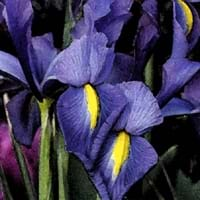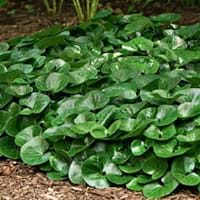Life Span
Perennial
Annual and Perennial
Type
Herbaceous Perennial
Broadleaf Evergreen
Origin
Hybrid origin
Western Europe
Types
Not Available
Not Available
Habitat
meadows, Riverbanks, Rocky Mountains
gardens, Lake Sides, Marshy ground, shade of upland trees, Shaded sites, Subtropical climates
USDA Hardiness Zone
5-9
4-8
AHS Heat Zone
9-5
Not Available
Sunset Zone
2b, 3a, 3b, 4, 5, 6, 7, 8, 9, 10, 11, 12, 13, 14, 15, 16, 17, 18, 19, 20, 21, 22, 23, 24
Not Available
Habit
Clump-Forming
Spreading
Flower Color
White, Yellow, Blue, Purple, Orange, Pink, Rose, Coral, Peach, Burgundy, Lavender, Plum, Orange Red, Dark Salmon, Bronze, Chocolate, Black
Green, Purple, Brown
Flower Color Modifier
Bicolor
Bicolor
Fruit Color
Not Available
Not Available
Leaf Color in Spring
Green, Light Green, Gray Green
Dark Green
Leaf Color in Summer
Yellow green
Dark Green
Leaf Color in Fall
Not Available
Dark Green
Leaf Color in Winter
Light Green
Dark Green
Leaf Shape
Sword-like
Cushion
Plant Season
Spring
Spring, Summer, Fall, Winter
Sunlight
Full Sun, Partial Sun
Partial shade, Full Shade
Growth Rate
Medium
Medium
Type of Soil
Clay, Loam, Sand
Loam
The pH of Soil
Acidic, Neutral, Alkaline
Acidic, Neutral
Soil Drainage
Well drained
Well drained
Bloom Time
Early Spring, Spring, Late Spring
Late Spring
Tolerances
Drought
Not Available
Where to Plant?
Ground
Container, Ground
How to Plant?
Root Plants
Divison, Rhizome division
Plant Maintenance
Medium
Low
Watering Requirements
Average Water Needs
Average Water Needs
In Summer
Lots of watering
Average Water
In Spring
Moderate
Moderate
In Winter
Average Water
Average Water
Soil pH
Acidic, Neutral, Alkaline
Acidic, Neutral
Soil Type
Clay, Loam, Sand
Loam
Soil Drainage Capacity
Well drained
Well drained
Sun Exposure
Full Sun, Partial Sun
Partial shade, Full Shade
Pruning
Remove damaged leaves, Remove dead branches, Remove dead leaves
Don't prune in winter, Prune in spring, Remove dead branches, Remove dead leaves
Fertilizers
All-Purpose Liquid Fertilizer
All-Purpose Liquid Fertilizer
Pests and Diseases
Bacteria, fungus, Viruses
Ants, Slugs, Snails
Plant Tolerance
Drought
Not Available
Flowers
Yes
Insignificant
Flower Petal Number
Single
Not Available
Foliage Texture
Fine
Medium
Foliage Sheen
Matte
Glossy
Attracts
Butterflies, Hummingbirds
Insects
Allergy
Not Available
no allergic reactions
Aesthetic Uses
Beautification, Showy Purposes
Showy Purposes
Beauty Benefits
Not Available
No Beauty Benefits
Environmental Uses
Air purification
Air purification
Medicinal Uses
Not Available
Ear ache, Fever, Heart problems, Menstrual Disorders, Snakebite
Part of Plant Used
Flowers, Root
Whole plant
Other Uses
Basketary, Used for fragrance
Not Available, Used in making tooth powder
Used As Indoor Plant
No
No
Used As Outdoor Plant
Yes
Yes
Garden Design
Cutflower, Foundation, Mixed Border, Rock Garden, Wall
Edging, Groundcover
Botanical Name
IRIS 'Apollo'
ASARUM europaeum
Common Name
Carmen Iris, Dutch Iris
European Wild Ginger
In Hindi
Dutch Iris
यूरोपीय जंगली अदरक
In German
Dutch Iris
Europäische Wild Ginger
In French
Dutch Iris
Wild Ginger européenne
In Spanish
Dutch Iris
Wild Ginger Europea
In Greek
Dutch Iris
Ευρωπαϊκή Wild Ginger
In Portuguese
Dutch Iris
Wild Ginger Europeia
In Polish
Dutch Iris
Kopytnik pospolity
In Latin
Dutch Iris
Gingiberi Europae Wild
Phylum
Magnoliophyta
Magnoliophyta
Class
Magnoliopsida
Magnoliopsida
Order
Asparagales
Piperales
Family
Iridaceae
Aristolochiaceae
Clade
Angiosperms, Monocots
Angiosperms, Magnoliids
Tribe
Irideae
Not Available
Subfamily
Iridoideae
Not Available
Number of Species
Not Available
Importance of Dutch Iris and European Wild Ginger
Want to have the most appropriate plant for your garden? You might want to know the importance of Dutch Iris and European Wild Ginger. Basically, these two plants vary in many aspects. Compare Dutch Iris and European Wild Ginger as they differ in many characteristics such as their life, care, benefits, facts, etc. Every gardener must at least have the slightest clue about the plants he wants to plant in his garden. Compare their benefits, which differ in many ways like facts and uses. The medicinal use of Dutch Iris is Not Available whereas of European Wild Ginger is Ear ache, Fever, Heart problems, Menstrual Disorders and Snakebite. Dutch Iris has beauty benefits as follows: Not Available while European Wild Ginger has beauty benefits as follows: Not Available.
Compare Facts of Dutch Iris vs European Wild Ginger
How to choose the best garden plant for your garden depending upon its facts? Here garden plant comparison will help you to solve this query. Compare the facts of Dutch Iris vs European Wild Ginger and know which one to choose. As garden plants have benefits and other uses, allergy is also a major drawback of plants for some people. Allergic reactions of Dutch Iris are Not Available whereas of European Wild Ginger have no allergic reactions respectively. Having a fruit bearing plant in your garden can be a plus point of your garden. Dutch Iris has no showy fruits and European Wild Ginger has no showy fruits. Also Dutch Iris is flowering and European Wild Ginger is not flowering . You can compare Dutch Iris and European Wild Ginger facts and facts of other plants too.





